It felt very surreal. I had always wanted to get lost in some foreign land where no one spoke English, with signs written in indecipherable characters and foreign instruments and voices. I had not quite achieved that here. English is the lingua franca for Guamanians, and the music was definitely American. The only tough time I had communicating was with a deaf woman. She stood there, trying to point at slushy flavors. For some reason, I just couldn't get what I wanted across. Oh well, I eventually did get a green flavor, I think it was some sort of coconut combo, with chunks of fruit in it. I slurped it down, the pale Japanese sometimes giving me a look over. I looked them over too.
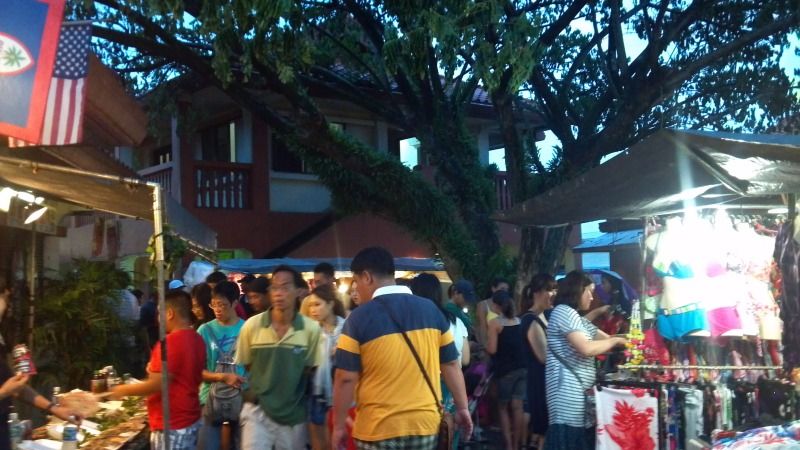

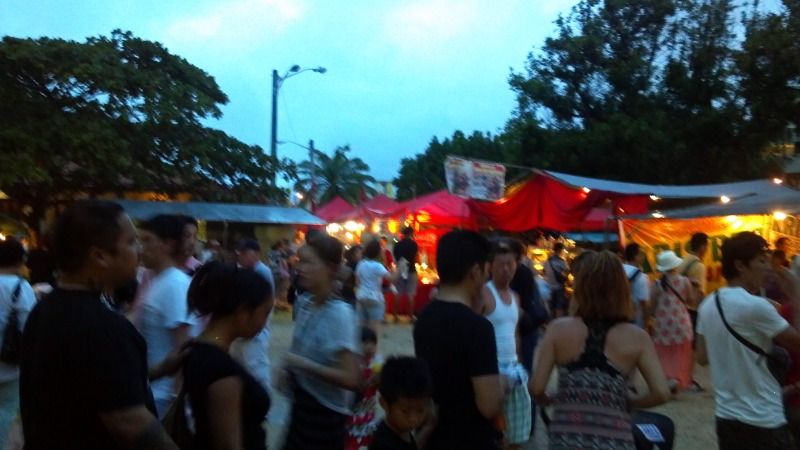

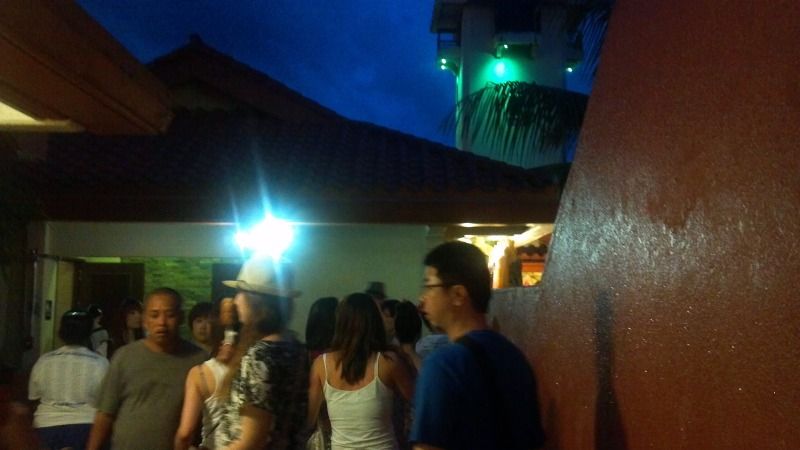
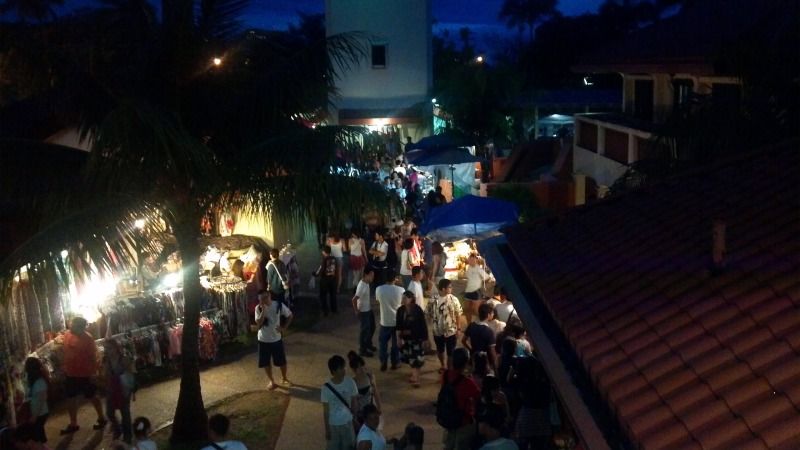
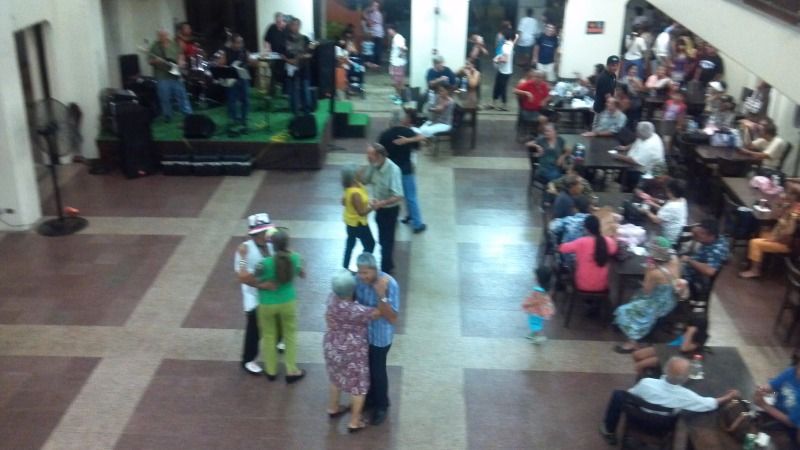
The shops were cramped, trinkets shoved together-- silver, beads, wooden figures. It smelled good in those little shops, but it was also humid in them. I would smile at the workers, and sometimes they would reciprocate, more often I would receive a tired grimace. Like the items on sale, the people were packed together, and I can imagine it was frustrating to those facilitating the traffic.
Walking back and forth across the festival, which is held every Wednesday evening, I admired the diversity of people. Like I mentioned before, there were many Japanese and Korean people, a few haoles, and many native islanders. They were all there, thrown together like so many fish in a Vietnamese barrel. But that's what Guam is, a mix of cultures sometimes combined haphazardly. Ben Blaz mentions it in Bisita Guam: Let Us Remember, Nihi Ta Hasso, a book on his experience during Guam's WWII occupation. When his father was preparing a makeshift shelter from the ancestral Banyan trees after the Japanese arrival, Blaz was forlorn, saying:
"Banyan trees were considered the ancestral homes of the Taotaomona, the spirits of the first people. Permission had to be asked to enter any area where it was believed they lived, and dire consequences would befall anyone who failed to do so.After touring the island, being in many churches, and seeing a battlefield, I have realized that Guam is built on eras. A native Chamorro man told me this as he drove us to Mr. Rubbishman, a local recycler. He was proud of his heritage. And made mention of the various people across the island: the Chamorros, the Filipinos, the Chuukese, and the Navy men stationed there. I was fascinated to hear what he said about the island's history.
[...] Only hours earlier, we had left the Catholic Mass, and now we blanched at violating a pagan belief. Our consternation was not the result of youthful superstition. Our parents and grandparents shared the same conflicting ideas. As I grew older, I sometimes wrestled with the problem and could find no solution" (Blaz 18-19).
In the beginning, there was the native Chamorros who migrated to these islands from Southeast Asia. Their stories are still with us today, the island singing to itself. The Chamorro creation story speaks of the duality and completion of the masculine and feminine. Unlike the Judeo-Christian myth that has only a male God, the Charmorros' original creation deals with the duel feminine and masculine godhead. Their names, respectively, were Fu'una and Puntan. They lived in the void--free of time and space, but Puntan eventually discovers that he is dying. He fears for his sister, so he concocts a plan. He tells his kin that from his body she will create "the mighty stars, the vast ocean, and then the earth, the whisper of the wind, the softness of the plumeria's petals, and the fresh smell of rain" (Marianas Islands Legends: Myth and Magic, 2). She makes life from his head, the moon and the sun from his eyes. His breast becomes the sky, his heart the cycles of the day and season. From his back comes the earth, and lastly a rainbow from his eye brows.
After this was done, Fu'una was in tears. Still, even after discovering that her brother's plan had worked and the world was beautiful, she felt alone. "She swam with the sharks," says Bo Flood in the Marianas Islands Legends, "and followed the whales until she reached a string of lovely islands. She walked their beaches chasing ghost crabs, collecting shells, watching tropic birds soar between clouds. She laughed as hermit crabs scampered sideways and sea cucumbers spat out sand. She watched as fish nibbled on coral, amazed at their colors and shapes" (Flood 3). This passage resonates with me because I spent part of today (June 17) at Piti Bomb Hole Beach doing those same things--except for the birds, they no longer thrive here because of the snakes brought on accident by the Navy. However, it was in Southern Guam, Umatac, where Fu'una walked into the ocean, transforming into a rock. The water washed over her new body and split it into tiny pieces of sand--the souls of the people who would populate the island. Fu'una's rock, also called Laso de Fua, still exists today near where Magellen first landed his ships, though this fact is sometimes disputed. Hopefully, she is finally at peace.
Like I mentioned, I feel a kinship with the lady Fu'una. I also walked up along the shore, looking for shells and avoiding stepping on crabs. Sometimes I would look ahead and see a mass congregation of the crustaceans, big ones too, fleeing to their holes as I approached.
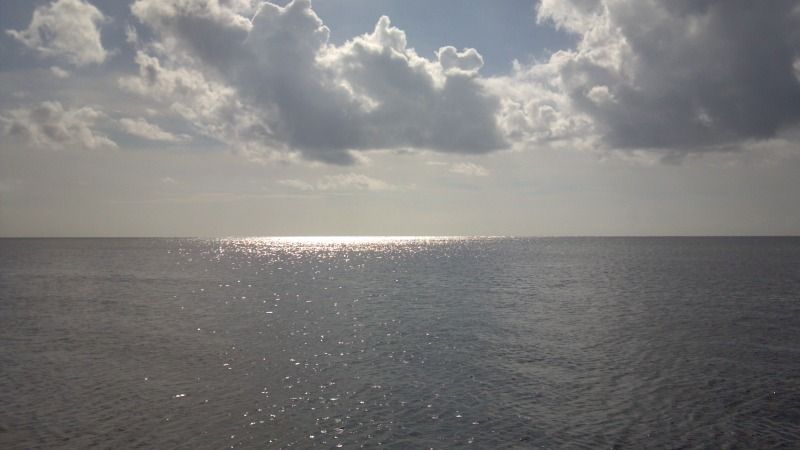
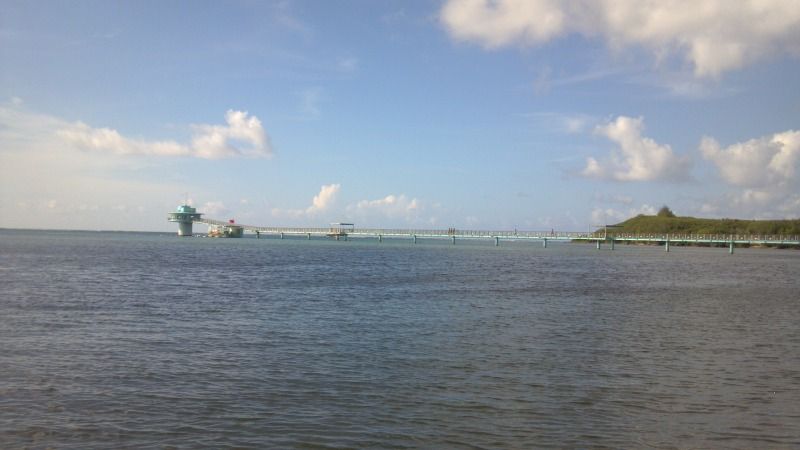
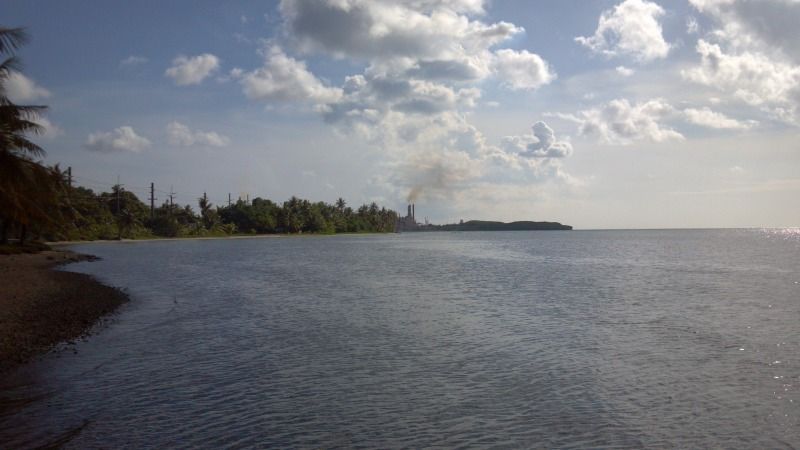
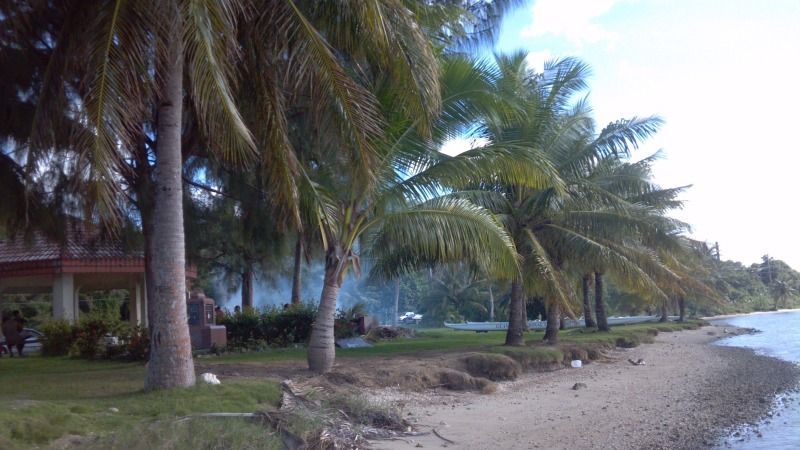
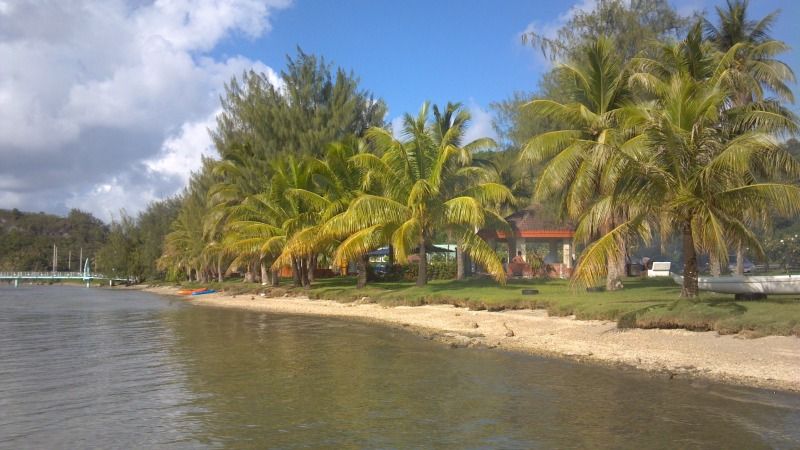
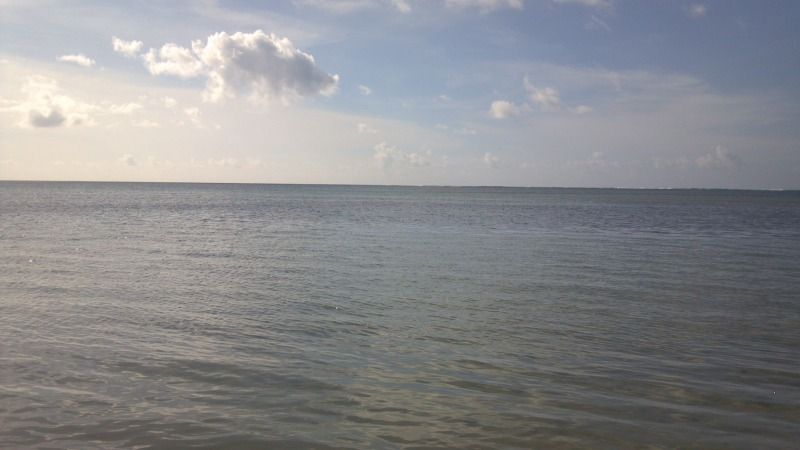
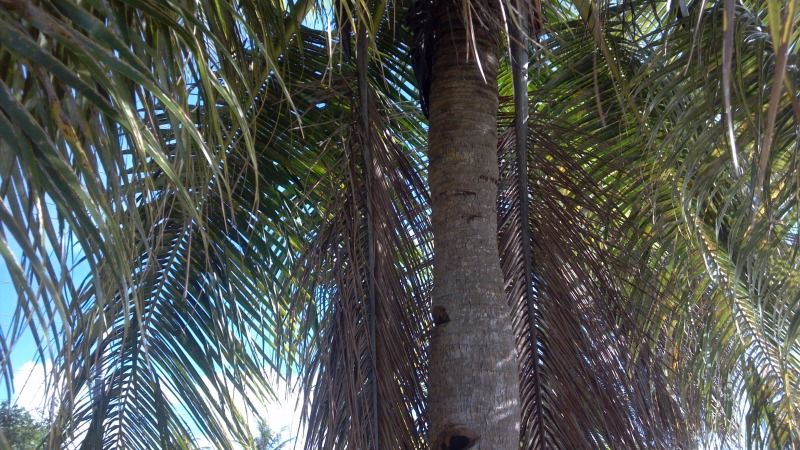
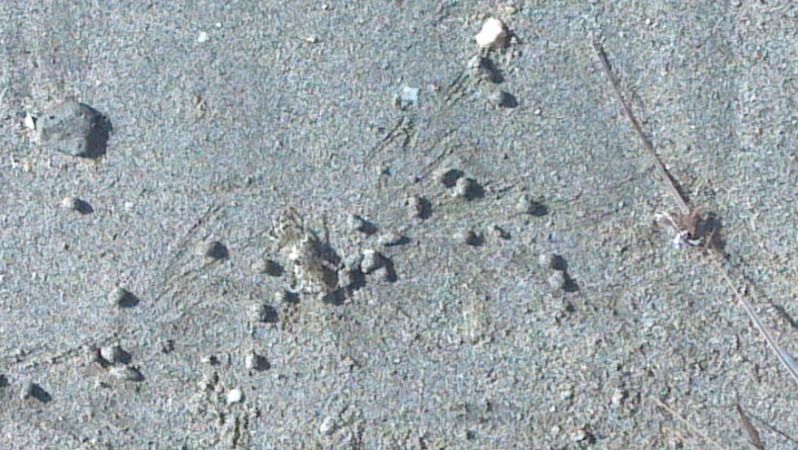
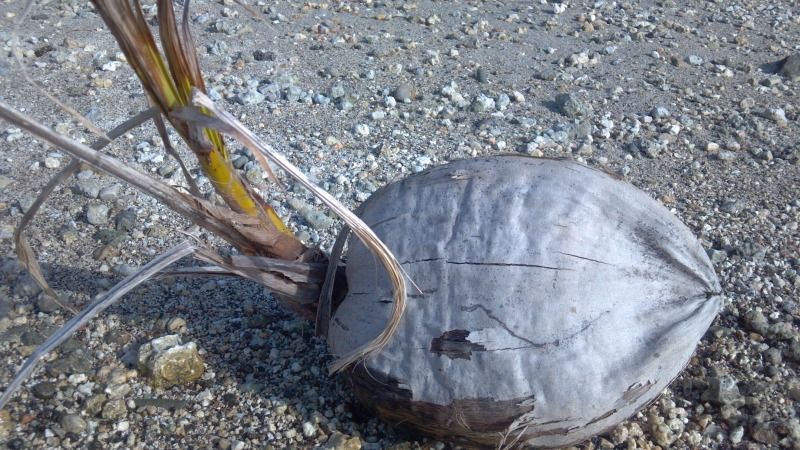

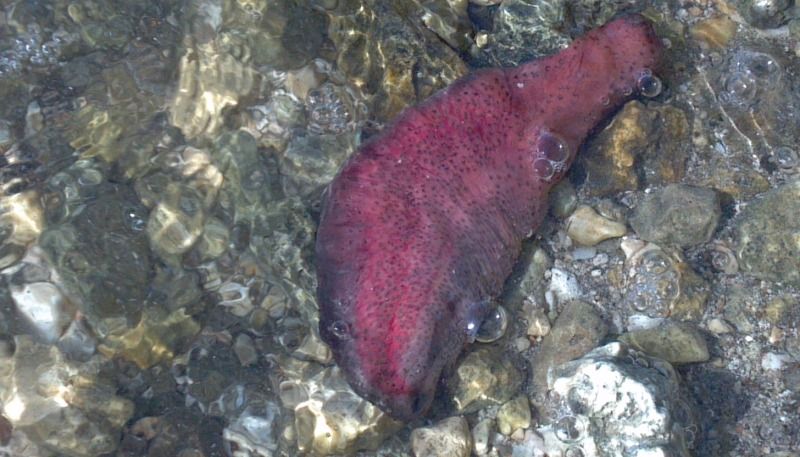
I ran into this grotesque alien looking beast. You can't see it in the video, but its disgusting little mouth opened and closed. It breathed in water and exhaled, its pink body moving with the crashing waves. Well, to be honest, I thought it was pretty cool. But I played it safe and didn't touch the thing. The beach itself is called Bomb Hole because there are deep craters where underwater caves collapsed (not actually from bombs, according to my uncle). The blue building you see out there is an underwater observatory which I haven't visited yet, and a little further north is where the Americans first landed to retake the island. It is dedicated to those fallen heroes.
----------------------------------------------------
My great uncle is a spiritual man, which I had not realized when I first got here. He has been giving me various books on Catholicism and science and how they can be reconciled. I, in turn, let him borrow my copy of The Power of Myth, where Bill Moyers interviews the great Joseph Campbell. As you can tell from my blog, the book has had an important influence on my way of thinking. At any rate, the first one I am reading is The Science of God by Gerald L. Schroeder. Its hypothesis deals with what the author calls a false dichotomy: that scientific truth and religious truth conflict with each other. His most powerful statement in this regard is that most people's understanding of the Bible is stuck at a Sunday Bible school level. When most people 'know' the stories, they do not look into them beyond their literal meaning. Myth should not be taken as something that is true in a material way, but in a spiritual sense. What I find hard to understand in Schroeder's work is why if both Science and Christianity can be 'true' but from different perspectives, why can't other myths be as well? What makes Science and the Church so sacredly right, but not Islam or Paganism?
Anyway, Schroeder, like many before him, asserts that though God created the universe, He let it find its own way like a river--it can flow any which way it wants but always reaches the sea. It's called free will. "Time and time again," he says, "the Torah implies that the infinitely powerful biblical God withheld control and allowed the world to follow its own course" (13). In fact the Bible often implies it. Like evolution, generations of Hebrews are documented in the Pentateuch as having progressively shorter lives. This imperfection is a result of the Creator splitting His pieces up in a 'divine contraction', tsimtsum. The more splitting the more chance for these imperfections.
Many scientific findings that originally contradicted the Bible have been shown to compliment its story instead. For example, the universe was created from an apparent void. Gradual evolution has not been verified in the fossil records. The 'days' of creation are not the 'days' we know. In the end, Schroeder says that though the two may "appear to be diametrically opposed [...] descriptions of the creation of the universe, of the start of life on Earth, and of our human origins are actually identical realities but viewed from vastly different perspectives" (3). Like mentioned earlier, I struggle with this. It makes sense, yes? But it also excludes a lot of other ideas about the cosmos like the Guamanian creation myth, which can be just as true as the Monotheistic one if you look at it metaphorically.
----------------------------------------------------
Perhaps living here has made me more spiritual. Going to Catholic Church every weekend makes me want to find a religion. I feel like I need guidance, a maestro to show me a way through life. However, this might be a mortal weakness. Other religions preach that all the dualities are alive within us. In other words, inside is more real than outside. Plato's 'Allegory of the Cave' enhanced the way modern man thinks of objects, knowing that the one imagined in the head can be more perfect than the one outside it. That is why I love Guamanian myths. They come from the Paleolithic yoke, the only time in history when men and women found themselves on fully equal footing.
There is an early retelling of Christ's story in "How the Women Saved Guam" from Bo Flood's book on the Island legends. In it, an old woman, the maga'haga, warns that man has corrupted the Mother's harmony, saying that "the spirits are angry. The people no longer show respect. They take from the earth, take from the sea and give nothing in return. Nothing! No respect for the earth. No respect for the sea the water or each other. The spirits are angry. Our punishment will come from selfishness" (Flood 5). Her predictions come true. The island's soil no longer grows plants and the water is polluted. Eventually, they are attacked by a terrible intruder.
Ben Blaz also mentions feeling this great harmony, the ways of his ancestors, when living in Guam's jungles:
"My feet planted on the moist earth, the sun warm on my skin while the breeze eased the sweat from my body, I felt at one with the world. This was not a world of war or occupation. Those were the inventions of man. This was the world that God had made. I took a deep breath and could smell the trees and the flowers and the plants and grasses and the sea, all mixed together and yet each odor was distinct, but underlying it all was the smell of the earth -- rich, fecund, fertile, and abiding. It was everywhere and inescapable. It was the past, the present and the future. It held everything that had happened on the island from the instant it first broke above the surface of the sea to the time when the first man sniffed the air and left his naked footprint in the dirt to the point when it softly yielded to the footsteps of a boy falling under its sway. (Blaz 21)He goes further, mentioning that site isolates, but the other senses incorporate. This is exactly something the Jesuit researcher Walter Ong would say. His focus was on oral cultures and how they differentiate from literate ones. Human speech is vulgar compared to the polyphonic voice of nature--full of animals, birds, bugs, wind, and waves. It separates us from everything else. As Blaz writes, "we see forests but not trees, we see mountains but not rocks, we see lakes but not water. Scents are not like that. One enhances the others while remaining intact" (21). It is amazing how close the author sounds to his Paleolithic ancestors, an oral people who were aware of the importance of balance. He also laments what was lost with the coming of the Americans, namely the island's birds. The birds are a symbol for a greater destruction, that of a strong kinship with nature. Today we are too distracted with gadgets and too knowing that a safe, warm bed is only a few moments away. Nature, to us, is distant, separate. Instead of fearing the jungle and the Taotaomona trees, Blaz starts to see them as his ancestors saving the Chamorros from another occupier.
"Going into the jungle, I found myself at one with God, with the world about me and my heritage. It was there that I discovered that Chamorro was no mere racial or ethnic designation that pinpoints my position on some sociological or evolutionary chart. Rather, it's the description of a people. The blood that ran through me was the same as that which coursed through the veins of my ancestors fifteen hundred or more years earlier. The seat that soaked me was the sweat that soaked them, and my feeble naked footprints in the mud were the same as theirs. Those people and the dirt and the trees and the animals were all one. They were not separate beings cast into an alien world. Instead, the world and they were one. Neither they nor any part of their world could be removed without causing irreparable harm, just as major organs cannot be extracted from our bodies without sending us teetering to the point of collapse and death. That was their religion, and that is what they fought the Spanish to preserve. For them, God was not high up and far away, but immediately around them, surrounding them in the air, in their sweat. And it was with those people that I felt united. And for the first time I realized we are never alone" (Blaz 41)Blaz knew what is was like to be a part of a whole, to love and live like Christ thought we should. So did unknowingly the ancients who told the story of the women who saved Guam. From the primordial depths, a great terrible beast rose from the oceans. It was a "giant parrot fish, an atuhong, a monster covered with scales blue as the sky, green as fat mangoes and glowing gold like a ghostly sunset" (Flood 7). The men attacked it with spears, but it would not die. It was too ferocious and too quick, evading every strike. Finally, after many hunts and a massacre of the island's men, the women appeared with nets made from traditional pandanus. They had been weaving and appealing to their invisible ancestors as the men acted rashly. The men scoffed. "What use could a woman do against a giant fish?" they laughed.
But the women knew better. They threw that great net over the creature and pulled. Finally, the men understood. They grabbed their weapons while it was trapped and killed it. The lesson is that it is dangerous to exclude the Mother's knowing. She is the subconscious, and to ignore her is dangerous. The story ends with an image drawn by Connie J. Adams. Two fish swim away from each other. It is Pisces, or the Yin-Yang. After the fish is killed, the men, women, and children feast upon it in celebration. Likewise, after Jesus' resurrection he is found eating fish by his disciples. His symbol was also the fish, Pisces. By accepting both halves, masculine and feminine, and realizing they complete each other, the world can be in balance. Man's ego gives him strength to overrun nature, but woman's subconscious knowing realizes that man is also part of nature and thus must protect her.
----------------------------------------------------
I visited Micronesian Mall with Rob. It's a huge place with a great selection of Asian food.

I ate Korean food. It was delicious. Look at that mackerel staring at me, with its dead... eye.
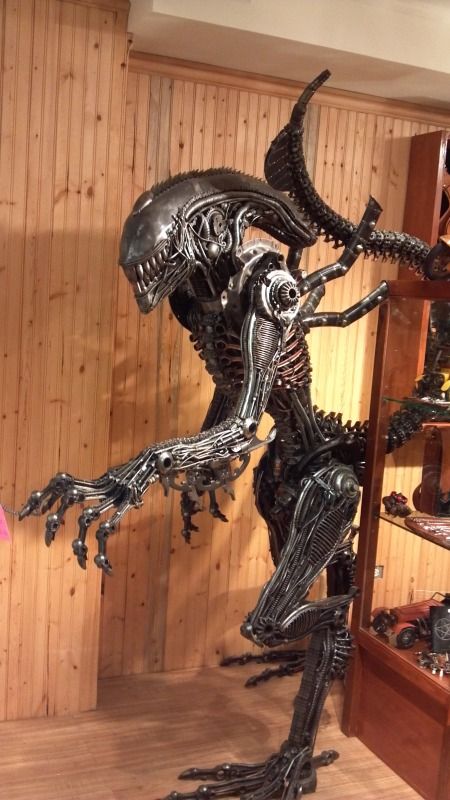

Metal Alien and Predator statues which decorated one of the stores. Goes well with my last blog on "Prometheus".
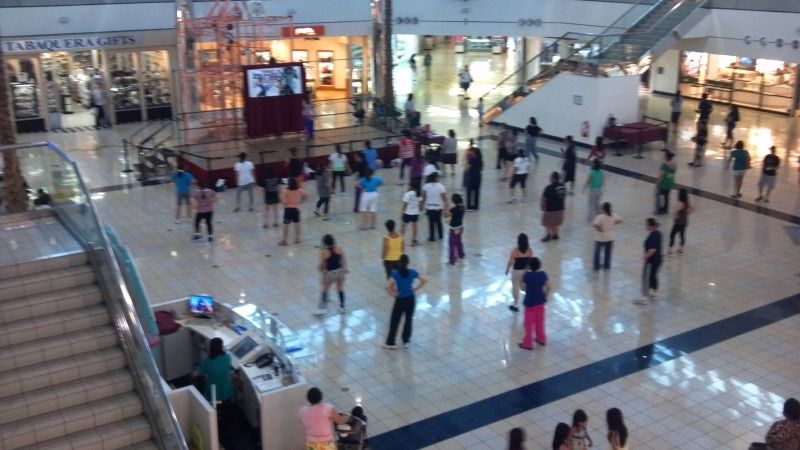
As we were leaving, we discovered a 'Zumba' dancing class. I recorded what could only be a humiliating event in some poor Guamanian's life, the dance.
And lastly, a huge slug that was crawling along my window. Slugs fascinate me.
I visit Saipan on Wednesday and Thursday. I will report back my stories in Guamanian Diaries, Pt 4.
No comments:
Post a Comment